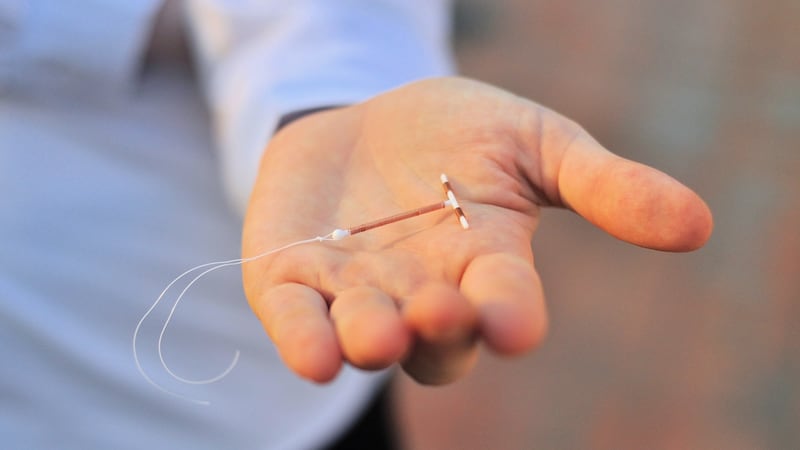“No woman can call herself free who does not control her own body. A woman must have the fundamental freedom to choose whether she will or will not be a mother, and how many children she will have.”
These are the words of Margaret Sanger, the birth control pioneer who opened America's first contraceptive clinic in 1916 – her activism driven by her Irish immigrant mother who died young after having 11 children.
Sanger broke the law of the time and the clinic was closed by police 10 days later. A controversial figure, she was subsequently banned from public speaking in Boston. In response, she sealed her lips with tape and wrote her speech on a blackboard.
Despite efforts to shut her down, she had ignited a movement for women’s reproductive freedom and went on to establish what became Planned Parenthood, providers of sexual healthcare in the US and globally.
If she was alive today, Margaret Sanger would likely be taking it to the streets. A real revolution for women’s reproductive choices would involve free provision of the most modern birth control alongside it.
After much celebration from activists following the success of Repeal and the legalisation of abortion, there has not been the same progress on the free and full availability of contraception.
Free contraception was originally proposed by the Oireachtas committee on the Eighth Amendment, and the Government pledged to provide it as part of measures to reduce crisis pregnancies.
The Department of Health has recently announced a working group to examine removing the cost barrier to accessing contraception. Minister for Health Simon Harris said he was aiming to provide it free this year. For now, with abortion services in place since the beginning of 2019, women still have to pay to prevent the need for one.

This is in stark contrast to other progressive countries, such as Sweden and the UK, where all methods are free. We are one of the very few countries still charging women for the contraceptive pill: it's free in many parts of the world – widely so across Europe, and free in countries as diverse as New Zealand, South Africa, Argentina, Iran, Syria, Paraguay, Uruguay, Uganda and Burkina Faso.
Effective methods
We are living in an era of almost 100 per cent effective methods – in the form of long-acting reversible contraceptives (Larcs) – meaning we have more control over our fertility than ever before. These are known as “fit and forget” intra-uterine devices that last for several years, have far fewer side-effects and are 99.95 per cent effective.
Unfortunately, many can not can afford Larcs, as they cost a basic of €250 upfront. They are financially prohibitive for many young women at the height of their fertility, who are in college or at the start of careers.
A recent survey by the UN's reproductive health agency UNFPA found 11 per cent of women in Ireland were still facing an "unmet need" for contraception, with cost understood to be the barrier.
Ann Furedi, chief executive of the British Pregnancy Advisory Service (BPAS), who cared for thousands of Irish women when they had to travel abroad for the service, says you cannot have a contraception service without abortion – and you cannot have an abortion service without contraception.
She describes Ireland’s current service as “perverse”, saying it was 50 years behind the British system. “The two things absolutely have to go together for women to have a real degree of control over their reproductive lives,” says Furedi. “Politicians don’t seem to be able to get what birth control should be into their heads.
"What you have in Ireland now is like what happened when abortion came into effect in England back in 1968. When abortion became free on the NHS, contraception wasn't available in the same way at all and women were still having to pay for the service up to 1974.
“The argument for free contraception was that it was perverse for abortion to be legal and free on the NHS, but not the means to prevent pregnancy. That’s exactly the same situation you’ve got now in Ireland.
Having grappled with the thorny branch of abortion, you would expect your politicians to understand that what women need now is the means to avoid the need for it
“Most women would prefer to prevent pregnancy than to end it. Having grappled with the thorny branch of abortion, you would expect your politicians to understand that what women need now is the means to avoid the need for it. It must be prioritised.
‘Save in the long term’
“Why would you stage it? Why does it need to be staged? It is not even as though the expense commitment is so very high. They will save in the long term. It is in the interest of society and the interest of women.”
Figures provided by the HSE to the Dáil state that, in 2016, the combined cost of the Drug Payment Scheme and medical card provision of contraception alone was in excess of €13 million that year.
Niall Behan, chief executive of the Irish Family Planning Association, believes it is understandable the focus is on abortion services first, but says ideally they should have been there in tandem.
“It’s clear you can’t have one without the other. Access to contraception is key to keeping the rate of abortion low. The focus has been on developing a care pathway for abortion services, and contraception is part of that. We’re going to look at free contraception for all women and Larcs are very much a part of that. They should be available to all women free of charge,” he says.

“We know that the biggest barrier to contraceptive use is cost and that’s the bit that the Government has promised to address. There is a social and economic rationale for it.”
Furedi and Behan both agree that just providing the pill and/or condoms is not enough. They join a number of medical experts calling for all forms of contraception to be made available alongside abortion. Dr Mary Short, the Irish College of General Practitioner's director of Reproductive and Sexual Health, says availability of contraception will make a significant difference to the number of crisis pregnancies – once Larcs are included. She has urged the Minister to include Larcs in any free contraceptive plan.
The women of Ireland are entitled to a holistic, comprehensive women's health service
Dr Maitiú Ó Tuaithail, president of the National Association of General Practitioners, says it is “incredibly disappointing that [current] services exclude the universal access to Larcs. The women of Ireland are entitled to a holistic, comprehensive women’s health service.” He points out that a woman can have an abortion for free, but will pay about €200 for a reliable contraceptive.
Veteran campaigner Nell McCafferty was a member of the Irish Women's Liberation Movement, who were so energised by the provision of birth control in 1971 that they took a train from Dublin to Belfast to bring back condoms.
Their generation made it legal. Now the onus is on this generation’s Government to make it free.
Guide to contraceptives . . . and their cost
Larcs
Long-acting reversible contraceptives are known as "fit and forget" devices, as once they are in place, they don't require any maintenance and last from three to 10 years.
They come in a number of forms: intrauterine systems (IUSs), intrauterine devices (IUDs), injectables and implants and are highly effective. They can be removed whenever the woman chooses, and pregnancy is possible right after.
Intrauterine systems are small, T-shaped, plastic devices put into the uterus by a doctor or nurse. The system releases a small amount of the hormone progestogen into the womb, which stops pregnancy by thickening the mucus in the cervix to make it difficult for sperm to move through it and reach the egg and thinning the lining of the womb so it is less likely to accept a fertilised egg.
It is more than 99 per cent effective, with some studies showing a rate of one pregnancy per year for every 2,000 women using it. This makes it more reliable than female sterilisation. The IUS contains the lowest dose of all hormonal methods of contraception and releases it locally in the womb. Removal is quick and easy.
The most commonly used IUS in Ireland is the Mirena coil, which lasts for five years. It can stop menstrual bleeding, which may not suit some women. It costs about €140 for the device and a further €230 for professional consultation and insertion.
IUDs – also known as the “copper coil” – are similar to IUSs, but instead of releasing hormones into the womb, it releases copper ions which immobilise the sperm and make it difficult for the egg to travel along the Fallopian tubes. If the egg is fertilised, the IUD prevents it from implanting itself in the womb. A side-effect is that it can cause heavier-than-normal bleeding. It is effective for five to 10 years. It costs €230 for consultation and insertion and €25 for the device.
The injection of progestogen prevents ovulation. It is administered by a doctor or a nurse and lasts for three months. Considerations include how it can take up to a year for your period and fertility to return after stopping, and possible weight-gain. The Depo-Provera costs €80, with a repeat injection priced at €66.
The contraceptive implant is a small flexible plastic tube which is placed just under your skin. It slowly releases progestogen and gives contraceptive protection for three years. The implant is usually inserted by a doctor in the inner part of the upper arm and while it can be felt under the skin, it cannot be seen. There is only one implant available in Ireland: Implanon. Implanon acts by preventing ovulation and thickening the mucus at the neck of the womb, making it difficult for sperm to enter. It has a low failure rate, with fewer than one in 1,000 women using it over three years becoming pregnant. It costs about €140 for the implant, with consultation and insertion priced at €180.
The pill
The combined pill is the most commonly used and contains oestrogen and progestogen. It works by stopping ovulation, altering the lining of the womb and thickening mucus in the cervix. With perfect use, its effectiveness is 99 per cent, however, it must be taken every day or it will not work. Studies have shown that its typical effectiveness rate is 91 per cent. A prescription for the pill can be obtained from a doctor or a family planning clinic. The contraceptive pill costs between €5 and €8 per pack and a consultation for a three- to six-month prescription costs €60, and €45 for repeat.
Condoms
Condoms are easily accessible, prevent the spread of STIs/HIV and have no side-effects. Used perfectly, the effectiveness of the natural latex sheaths is 98 per cent, but, in practice, they have been found to be only 85 per cent. A pack of 12 costs about €12.99.
Diaphragms
Vaginal diaphragms are domes of thin, soft silicone with a flexible rim, which fit into the woman's vagina. They form a barrier at the entrance to the womb which stops the sperm getting through. They need to be used with contraceptive gel to inactivate any sperm present. They are 92 to 95 per cent effective. A nurse or doctor must fit the patient first to establish size needed, then show how to insert and remove it. It is used only when having sex. Cost of consultation is €120 and the diaphragm is €20.









